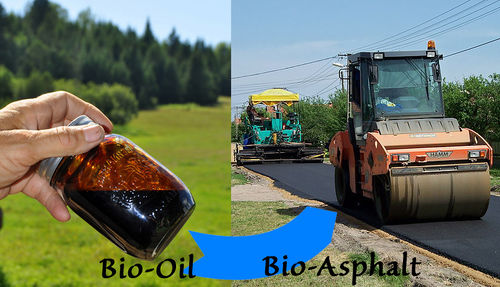Bio-Asphalt: Difference between revisions
Jump to navigation
Jump to search
(Added some more links under the "Internal Links" section) |
(Added some more links under the "External Links" section) |
||
| Line 16: | Line 16: | ||
=External Links= | =External Links= | ||
*[https://en.wikipedia.org/wiki/Bioasphalt The Wikipedia Page on Bioasphalt] | *[https://en.wikipedia.org/wiki/Bioasphalt The Wikipedia Page on Bioasphalt] | ||
*[https://www.youtube.com/watch?v=XKFaC5RYbEM A Video by the Youtube Channel "Practical Engineering" on Ashpalt Concrete] (Discusses it's recyclability) | |||
*[http://www.news.iastate.edu/news/2010/oct/bioasphalt “Bioasphalt(R) developed at Iowa State to be used, tested on Des Moines bike trail”] | *[http://www.news.iastate.edu/news/2010/oct/bioasphalt “Bioasphalt(R) developed at Iowa State to be used, tested on Des Moines bike trail”] | ||
*[https://www.wageningenur.nl/en/article/Bioasphalt.htm Wageningen UR Bioasphalt] | *[https://www.wageningenur.nl/en/article/Bioasphalt.htm Wageningen UR Bioasphalt] | ||
Revision as of 17:00, 8 September 2020
Basics
- A "fully dried" or refined product of Bio-Tar
- Can essentially be a drop in replacement for Asphalt
- Main use is Pavement
Internal Links
- Bio-Asphalt
- Creosite
- Bio-Pitch
- Tar
- Biorefinery
- Eco-Industrial Park: paving roads in the park
